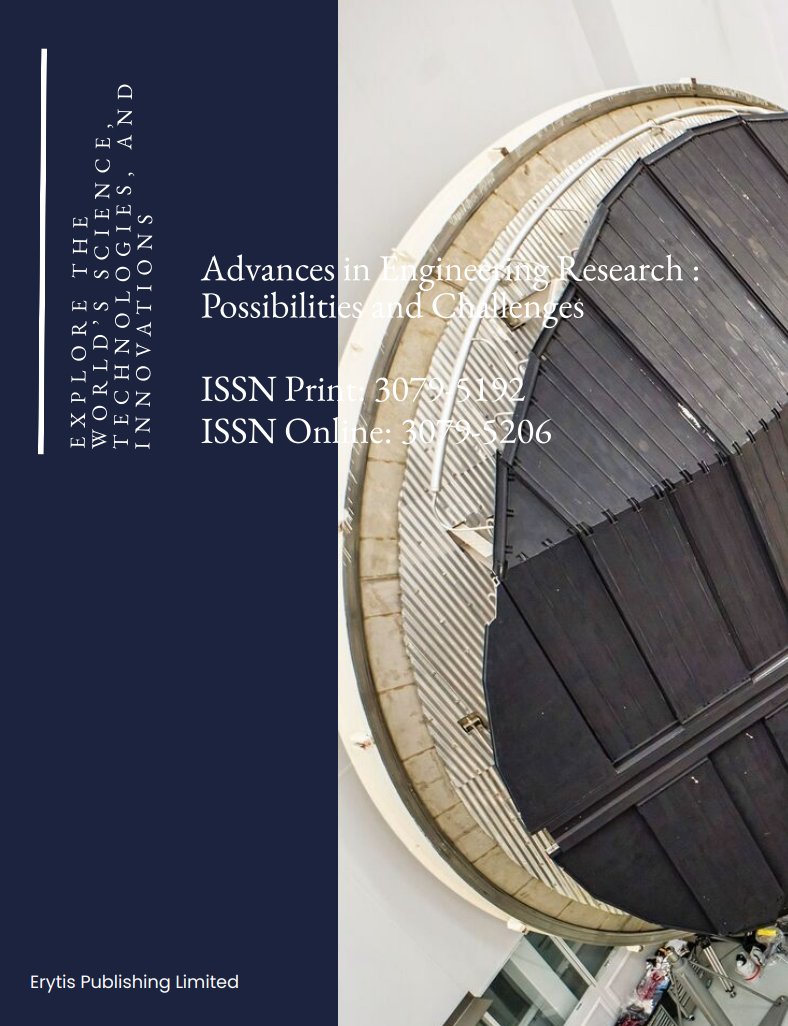Research on Marine Chemical Industry and Tourism Collaboration from Land-Sea Coordination Perspective Based on Multi-Scale Modeling: A Case Study of Fujian
DOI:
https://doi.org/10.63313/AERpc.9027Keywords:
Land-sea coordination, Multi-scale spatial modeling, Industrial collaboration, Digital twin, Marine economyAbstract
This study constructs a multi-scale spatial model (MS-SLM) integrating "macro (resource carrying capacity)-meso (industrial network)-micro (enterprise be-havior)" under the guidance of the national land-sea coordination strategy, aiming at the spatial conflict and eco-economic imbalance between marine tourism and chemical industry in Fujian Province. By combining the hyperbolic secant activation function and federated learning technology, the model light-weight and multi-source data fusion are realized. The research finds that: the marine GDP of Fujian Province reached 1.32 trillion yuan in 2024, but the 19-kilometer coastline overlap between Gulei Petrochemical Base and Dongshan Island tourist area led to a 15-day year-on-year increase in red tide outbreak days, and the water quality exceeding standard rate of Liu'ao Beach rose to 18.6%. Through the quantitative analysis of Moran's index and Dagum Gini coef-ficient, the model predicts that the probability of industrial land conflict in Meizhou Bay will reach 0.78 in 2030, while the optimization of chemical marine transport routes based on the digital twin system can reduce the environmental pollution risk by 35%. At the practical level, the integration and innovation of industrial tourism chain (annual derivative income of 1.2 billion yuan), circular economy chain (34% waste resource utilization rate) and blue carbon value chain form an "ecological-economic" dual-objective optimization scheme, providing a "Fujian paradigm" for national land-sea industrial collaboration. The study suggests further integrating tidal energy data with the construction of Fujian-Taiwan blue economic corridor to promote the high-quality development of marine economy.
References
[1] Du, S.H., Cui, L.Q., Zhao, W.Z. and Guo, Z. (2015) Advances in Multiscale Spatial Relationship Research.Journal of Geo-Information Science,17, 135-146.
[2] Shu, H. (2007) Gail Langran. The Unification of Spatiotemporal Data Models.Geomatics and Information Science of Wuhan University,8, 723-726.
[3] Cao, J.N. (2018) Research on Feature-Structured Multiscale Analysis Modeling Methods for High-Resolution Image Information Extraction.Geomatics and Information Science of Wuhan University,43, 1943-1953.https://doi.org/10.13203/j.whugis20180253.
[4] Hoekstra, A., Chopard, B. and Coveney, P. (2014) Multiscale Modelling and Simulation: A Position Paper.Philosophical Transactions of the Royal Society A: Mathematical, Physical and Engineering Sciences,372, 20130377.
[5] Zhang, H.L. and Guo, X.M. (2011) Advances in Multiscale Simulation and Compu-ta-tion.Chinese Journal of Computational Mechanics,28, 1-5.
[6] Xing, W.X., Lin, Y.T., Liu, D.H., Song, H.Q. and Li, T. (2023) Basic Understanding, Preparation Ideas, and Implementation Paths of Marine Detailed Planning from the Perspective of Ter-ritorial Spatial Planning.Urban Planning Forum,4, 95-103.https://doi.org/10.16361/j.upf.202304012.
[7] Kong, H., Xue, W.Z. and Lin, X.Y. (2025) Construction and Evaluation of a High-Quality De-velopment Indicator System for Fujian's Marine Economy.Marine Economy,15, 60-65.https://doi.org/10.19426/j.cnki.cn12-1424/p.2025.02.001.
[8] Fujian Provincial People's Government. (2021) Three-Year Action Plan for Accelerating the Construction of "Maritime Fujian" and Promoting High-Quality Development of the Marine Economy (2021–2023). Document No. Min Zheng [2021] 12.
[9] Lin, R.T. and Xu, S.Y. (2025) Research on Accelerating the High-Quality Development of Fujian's Marine Economy.Development Research,42, 64-69.
[10] Lin, Y.F. (2014) An Empirical Study on the Impact of Marine Industry Agglomeration on Economic Growth in Fujian Province. Master's Thesis, Fujian Normal University, 45-47.
[11] Fujian Provincial Ocean and Fisheries Bureau. (2025) 2024 Fujian Provincial Marine En-vironmental Quality Bulletin.
[12] Zheng, L.F. and Zhu, Y.N. (2024) Exploring Paths to Promote High-Quality Development of Fuzhou's Marine Economy.Agricultural Development and Finance,12, 28-30.
[13] Yan, L.P., Jiang, Y.Q. and Wu, Y.X. (2024) New Productive Forces Enter the Sea: Blue Economy Upgrades.Fuzhou Daily, 003.
[14] Huang, G.C. The Value and Implementation Path of Integrating Fujian Marine Culture into Ideological and Political Education in the New Era.Journal of Hainan Tropical Ocean Uni-versity, 1-11.
[15] Fujian Provincial People's Congress. (2024) Fujian Provincial Coastal Zone Comprehensive Protection and Utilization Regulations.
[16] Zhou, D., Zhao, X.Y., Xu, Z.H., Li, C.J., Lv, Z. and Wang, J.F. (2023) Optimization of Land-Sea Coordination Paths in China's Coastal Areas under Territorial Spatial Planning.Economic Geography,43, 180-189.https://doi.org/10.15957/j.cnki.jtdl.2023.10.018.
[17] Lin, X.R., Xu, M.H., Wen, C.X. and Li, Y. (2024) Theory and Methods for Provincial Coastal Zone Industrial Spatial Land-Sea Coordination Planning from a Multiscale Perspective: A Case Study of Fujian Province.Urban Planning Forum,4, 112-118.https://doi.org/10.16361/j.upf.202404015.
Downloads
Published
Issue
Section
License
Copyright (c) 2025 by author(s) and Erytis Publishing Limited.

This work is licensed under a Creative Commons Attribution 4.0 International License.















